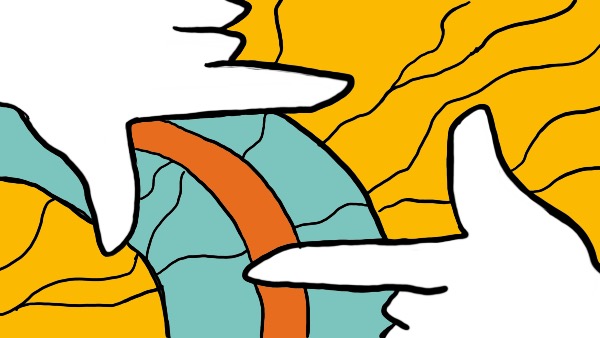There’s something particularly arresting about drone photography that is absolutely on display in the 2021 Drone Photo Awards, fifteen entries of which are showcased by CNN here. I think the singular magic of the technique is its ability to change how we think about visual storytelling.
It’s understandable to think of visual storytelling—and storytelling more generally—as deeply linked to intimacy. Visually, this is usually a product of framing; tight framing, especially in a whiteboard video, links the viewer to the artist’s hand, and creates a relationship between the storyteller and the viewer.
Drone photos, by contrast, almost never utilize tight framing—their very nature means they capture images from a distance, in ways that most people couldn’t achieve, and with a wide depth of field. One might imagine this would create a loss of intimacy, as the drone’s distance would always create a sense of detachment from the subject.
CNN’s collection of images shows us a completely different side of drone photography—one that is both intimate and transformative.
The first image in the list, Gheorghe Popa’s winner in the Abstract category, transforms a polluted Transylvanian river into an image we could only understand from the sky. Up close, one might never register the severity of the pollution. From on high, it’s shocking: a vibrant orange streak cutting through the center of the waterway, undeniably massive and… wrong. It tells a story about being too close to see the problem, and how a perspective shift can reveal truths that, while never hidden, might not have made the impact they needed to make.
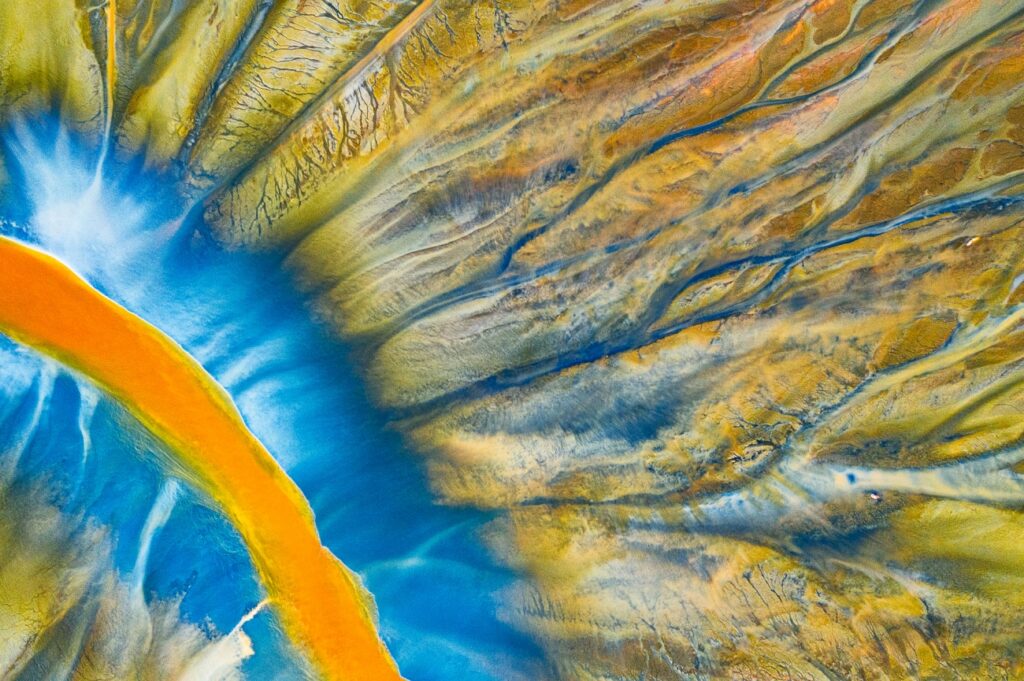
by Gheorghe Popa
The third image, Wujiang Zhu’s capture of a newly-married couple on a path between gorgeous, curving beds of pink, white, yellow, red, and green flowers, uses its frame to show something an on-the-ground photographer couldn’t capture: a jaw-dropping sense of place. This couple becomes a part of the life around them, growing together just like their surroundings.

by Wujiang Zhu
Then, there are images like Phil De Glanville’s Sport category winner (CNN’s sixth image) that show visual storytelling truly made only possible by the unique wide and distant position of the drone. A Western Australian surfer under an enormous wave, the image’s framing shows multiple incredible elements at once.
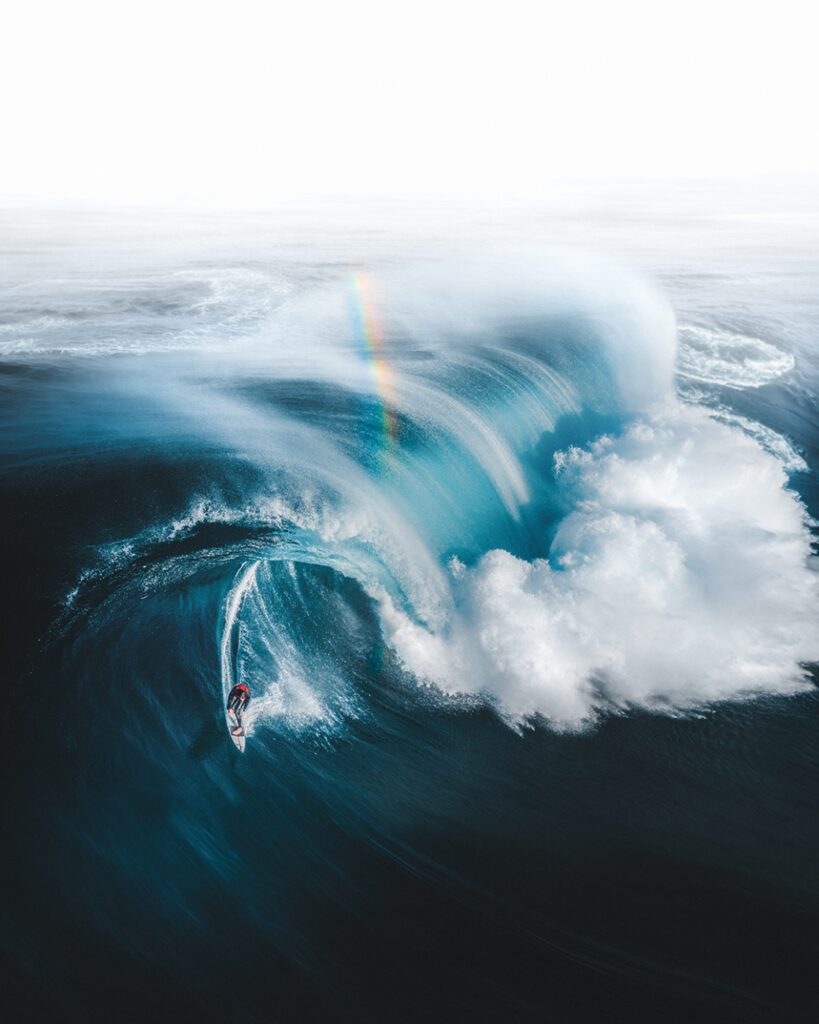
by Phil De Glanville
We see the scale of the wave in comparison to the surfer, the eruption of the crashing wave, and stretching across the top of the wave, a striking glint of rainbow. It’s a statement on the value we put into nature, whether it cares or not—no consciousness may have formed the wave, but we ride it, and we recognize the beauty of a rainbow over such a behemoth.
Paolo Crocetta’s second-place Abstract category drone photograph of Italian containers from above tells a story of accidental beauty. We see patterning so symmetrical that it belongs on a quilt, not utilitarian, mundane devices. Is there anything more or less special about intentional art, as opposed to an image like this? Does the artist deserve ‘credit’ for recognizing this image as worthy of capture, or is there some level of collective credit at play in the imagery we create in our day-to-day routines? Crocetta’s is a visual story that asks more questions than it answers, and this makes it all the more interesting.
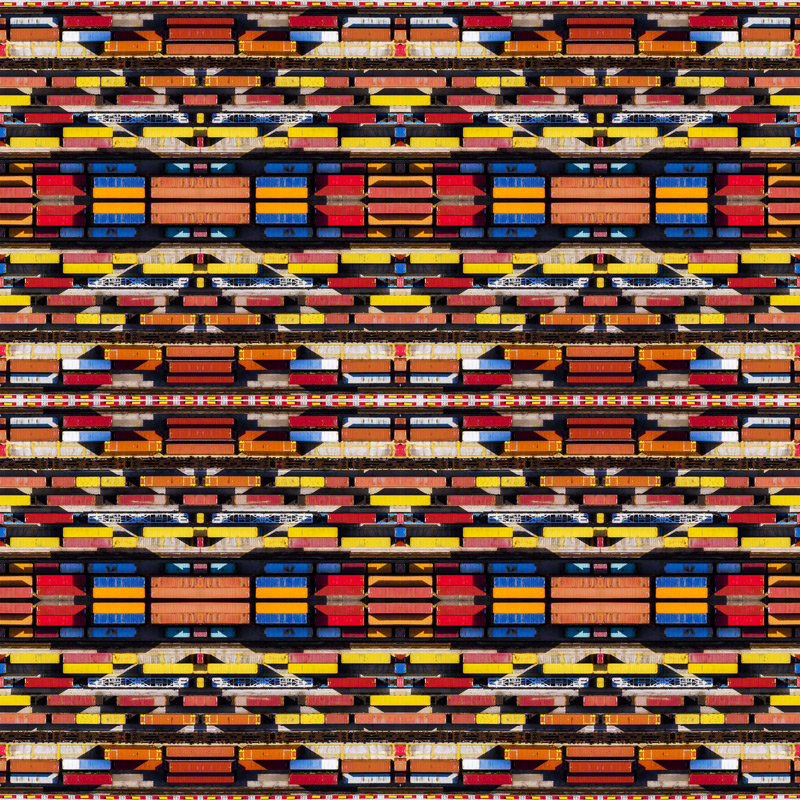
by Paolo Crocetta
If Zhu’s wedding photograph indelibly linked the couple to the life around them, Matteo Originale’s sunset wedding photograph (winner of the Wedding category) makes a rather different statement about the bride and groom. Capturing them walking alone along a wooden walkway in Marina di Pisa, Italy, with green brush to either side and a beautifully illuminated sunset in the center sky, Originale has created a world that belongs to this couple. Their path is laid out, clean and direct into the future. The ‘magic frame’ here, courtesy of the drone, gives us that sky—curled, mysterious, but inviting.
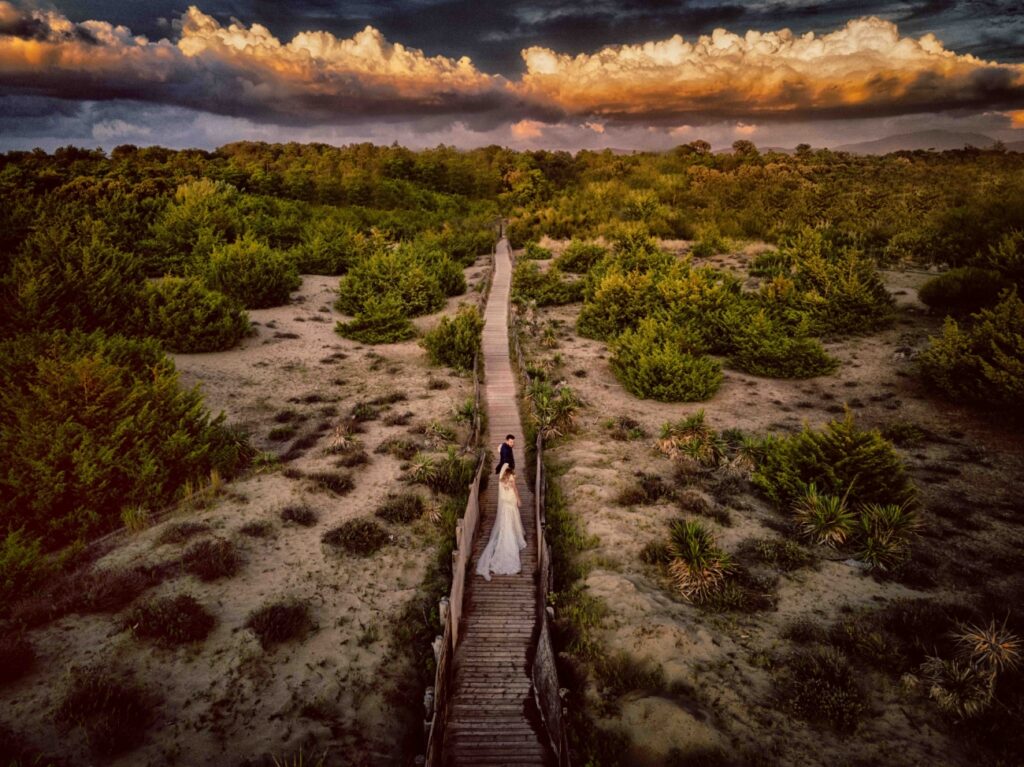
by Matteo Originale
Finally, George Steinmetz’ image of the Kingdom Centre in Riyadh, Saudi Arabia is a consummate celebration of modernity. The drone photo showcases the glittering tower, split into a massive, lighted purple V at its top. Behind it, Riyadh stretches, its ‘normally-sized’ buildings looking like toys compared to Kingdom Centre. Safer and able to get closer than any helicopter, the drone can stare into the V of Kingdom Centre in a way that almost nothing else can, and remind us not only the size of human civilization (and our capacity for expansion) but the beauty of what we create.
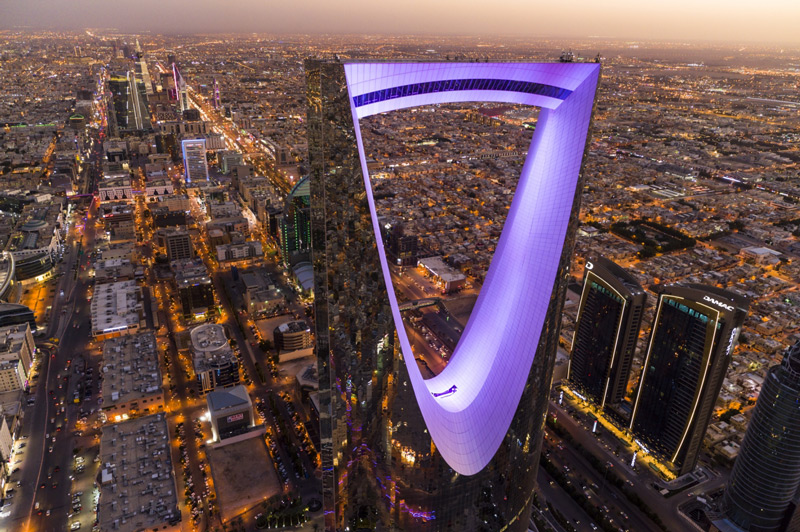
by George Steinmetz
By changing the perspective—the framing—available to photographers, drones change the possibilities of visual storytelling. They change the way we think of intimacy by recrafting our relationship with nature, with buildings, and with their human subjects. They both subvert and affirm the best principles of visual storytelling.

